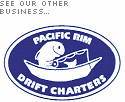
Weekly Home Information Guide
DRYER VENT INFORMATION GUIDE
Safety First! We strongly believe that the following precautions, maintenance and upgrades will give you peace of mind and increase the security of your dryer and vent component.
The dryer exhaust is a very critical component in the home. We have identified four areas of concern that if heeded will improve the safety and effectiveness of the dryer. Fires have been known to start in the unit itself and vent area. Sources of mould, fungi or mildew may form inside the ducting. We have inspected very many ducts with very few actually being close to ideal. Even new home construction, multi-units and town homes have problem conditions.
The first is the location of the unit from the exterior wall as this will determine the drying time. Shorter distances to the outside wall puts less strain on the exhaust flow rates, less chance of lint build-up, lessened possibility of moisture condensing inside the home and reduced possibility of mould/mildew/fungi growth. The best length should not exceed 25 feet in as straight a line to the exterior as possible. Any bends tend to reduce the total airflow values considerably. Dryer vent fans may be added providing the dryer manufacturer recommendations are followed and be readily accessed for cleaning.
The second is the type of duct itself. Older homes tend to have the original white vinyl spiral type that needed constant care. This was superceded by the mylar-covered polyester fiber and ribbed just like the vinyl but it still was not heat resistant. The ribbed construction created air turbulence inside the ducts that reduced the airflow and created pockets of lint buildup. Still not a good situation.
The best solution is the use of solid metal (light weight aluminum). This solves most problems because the inner surface is smooth, easier to support, costs less over the long haul, is easier to install and is less prone to catching fire.
The third is ease of maintenance. It is easier to vacuum a straight duct. The accordion style has to be unscrewed, removed (in most cases), shaken out and then replaced. Those old ones really have been through the gristmill. We have seen: excessive sagging, water filled, broken, smashed, disconnected, holed, missing sections, twisted, partially burned, toys and bird nests. In one case the dryer vent entered the floor and then exited the exterior on the opposite side of the home using the floor joist cavity. What gave it away was the moisture and rust. We falsely identified it as a cold air return duct. Sometimes you just never know. The outside damper should be weather tight, downward facing, easy to open, located way from any fresh air intake, assessable for cleaning, and out of reach of toddlers (hopefully). Fully caulk the exterior housing to prevent any moisture intrusion.
The fourth is the unit itself in that the installation has to be done according to the manufacturer specifications, located for ease of vacuuming behind at least three times yearly, the lint screen must be cleaned after every use because this is the first line of defense, and have a fire extinguisher within easy reach.
The following conditions are the warning signs of possible dryer vent failure. The laundry room may feel more humid than normal, it takes longer to dry the clothes, the smell of something burnt, the clothes may feel hotter when removed from the dryer, the dryer itself may feel hotter than usual, the exterior damper flaps do not close completely or do not open and/or water stains appearing on ceilings. There may be other conditions but these are the most common.
With safety in mind, the following suggestions will help in ensuring a healthier duct/vent system. Vacuum the dryer unit itself twice yearly, if readily accessible inspect all along the ducts for moisture, cracks, splits, sagging, holes, broken, or disconnected. When you are replacing the older styles with metal ducting ensure that every joint is sealed with metal tape and supported, the seams should be on the top, the fewest number of elbows the better, isolate the ducts from electrical wires and plumbing with at least a one inch air space. The angle of the ducting should slope down to the exit point. The exterior flaps should point downward, have at least a foot clearance from the finished grade, away from any fresh air intake, be weather protected and easily opened to vacuum. When the ducting is in an unheated crawl area the ducts should be properly insolated.
We recommend qualified tradespersons do all upgrading tasks as they offer quality materials, proper installation requirements and a written guarantee.
Know that, for peace of mind, the care and attention you give your home will serve you well year after year and in comfort.


